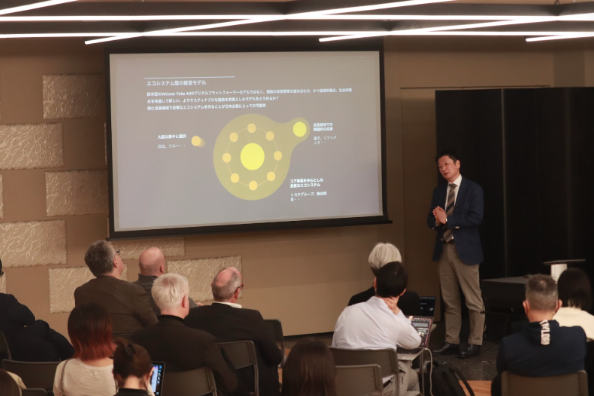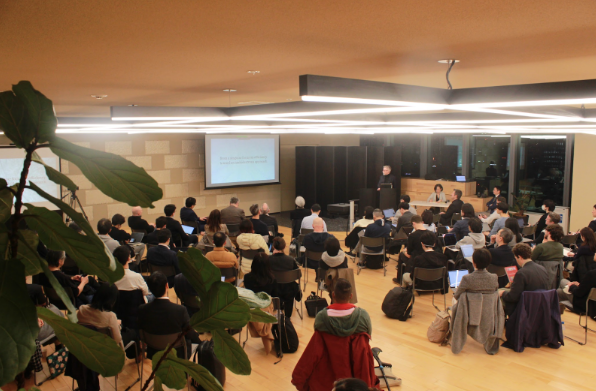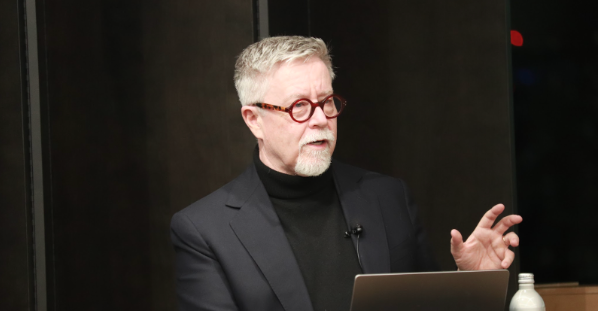
On March 17, Tim Brown, founder of IDEO and a globally recognized thought leader in design thinking and innovation, delivered an insightful session on the power of design to shape the world on Shizenkan campus. His presentation was followed by Masanobu Iwabuchi, who co-founded ENND PARTNERS in Japan alongside Mr. Brown, explored Japan’s pressing social challenges and the role of design thinking in addressing them.
Tim Brown defines design as the act of shaping the world to meet human needs. More than just aesthetics, design thinking is a human-centered, creative problem-solving process grounded in deep empathy and experimentation. At its core, design thinking balances three essential elements: desirability, feasibility, and viability. Desirability focuses on understanding human needs and wants, feasibility leverages technical possibilities, and viability ensures sustainability and sound business logic.
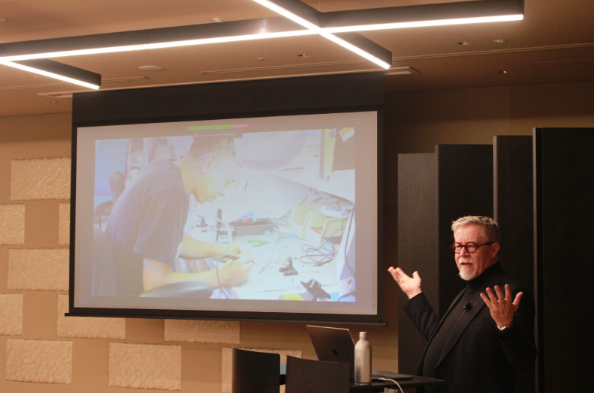
Brown illustrated the transformative potential of design-driven strategies through case studies such as D Ford, PillPack Online Pharma Service, and Innova Schools in Peru. These examples demonstrated how design thinking extends beyond product improvement, reshaping systems, services, and customer experiences to drive industry-wide transformation. Brown emphasized that Japan’s long-term focus, social stability, and stakeholder-oriented business culture provide a strong foundation for “ecosystem-based value creation”. By embracing design thinking, Japanese companies can move beyond short-term, efficiency-driven successes and create more sustainable, impactful innovations.
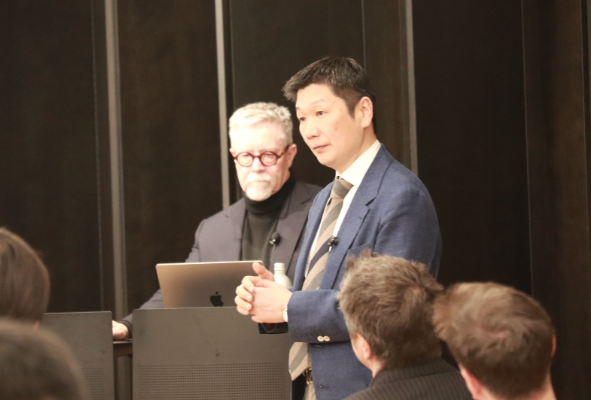
In the second half, Iwabuchi highlighted Japan’s urgent social challenge – “How can Japanese companies leverage design and humanity to build long-term global competitiveness?” This mentioned challenge includes an aging society, labor shortages, and AI-driven workforce shifts. He underscored how creativity and stakeholder capitalism can serve as crucial tools in navigating these complex issues. By fostering an ecosystem-based management model, businesses can create long-term value and drive meaningful change.
The insights shared by Tim Brown and Iwabuchi reinforce the potential of design thinking as a catalyst for innovation and systemic change. By integrating human-centered problem-solving approaches, Japanese companies and global organizations can build more resilient, adaptive, and impactful business models for the future.
